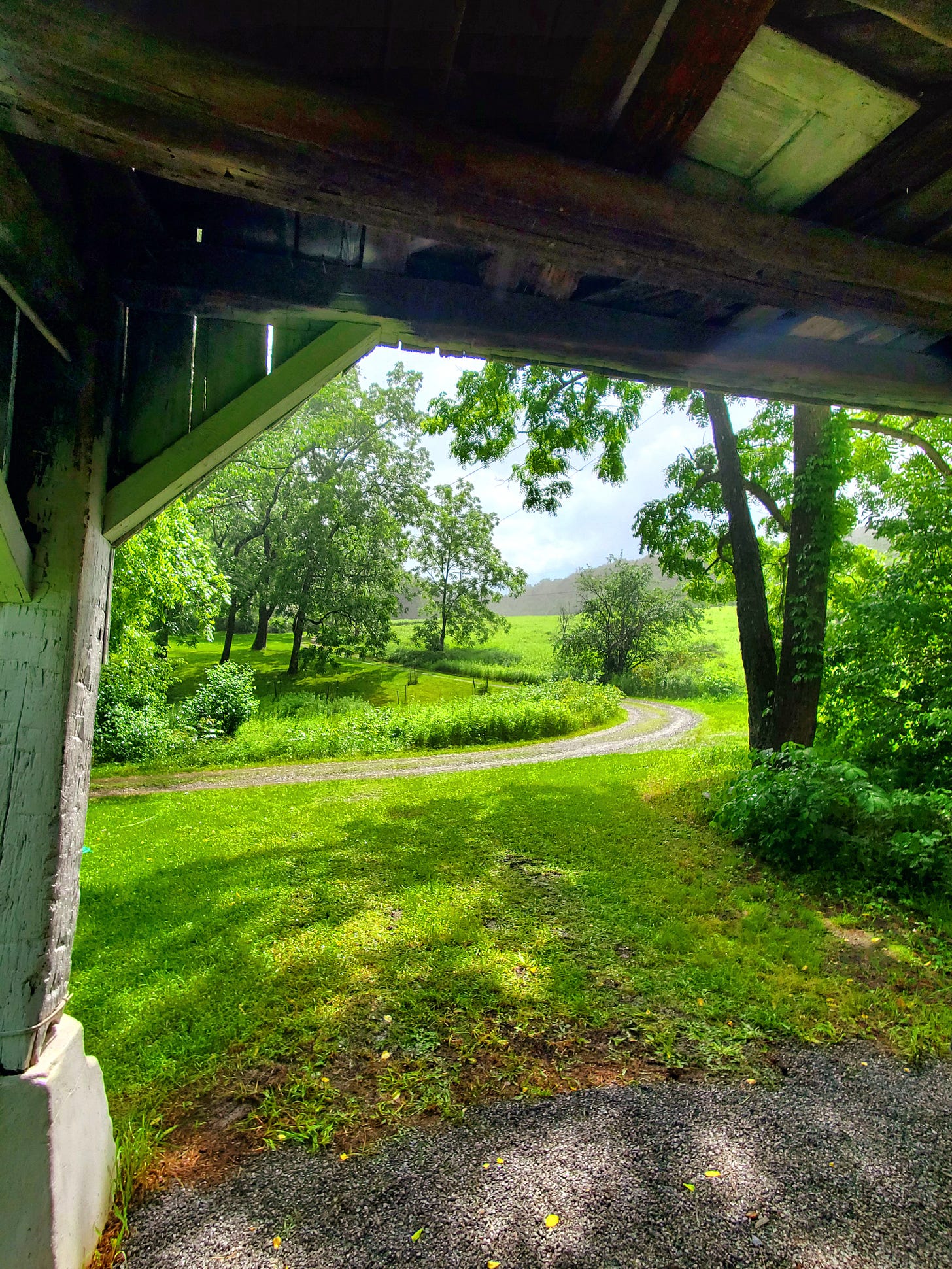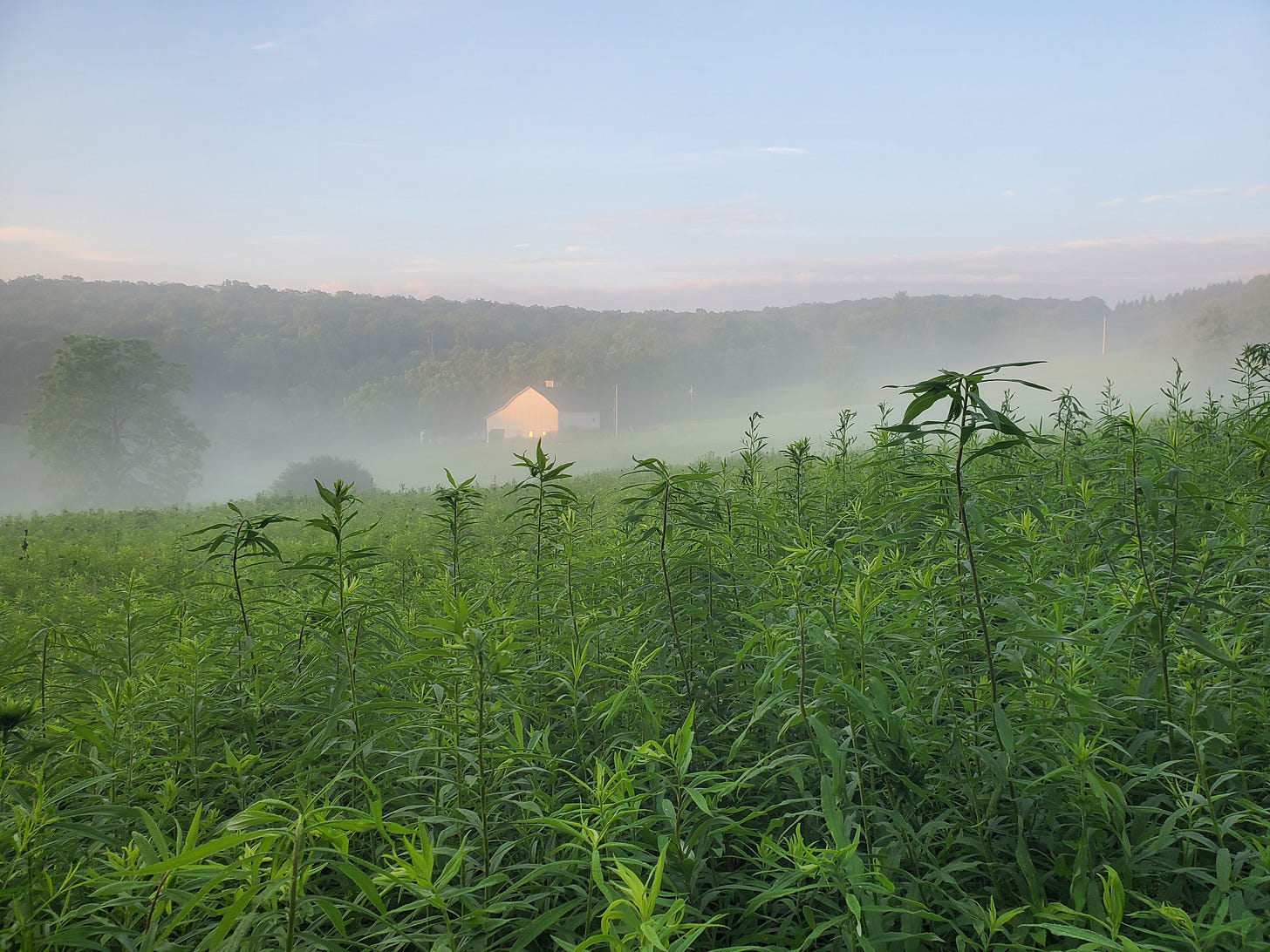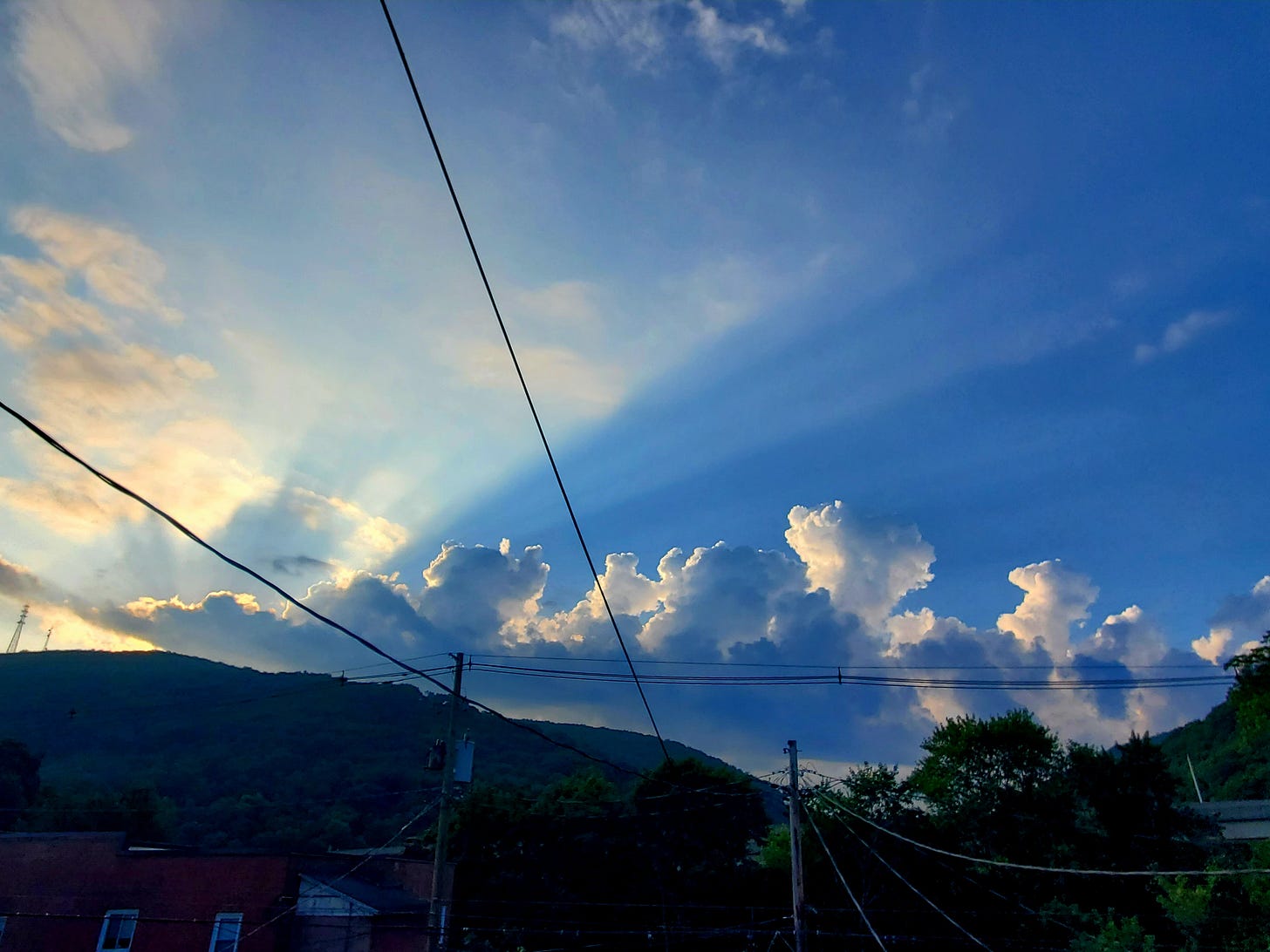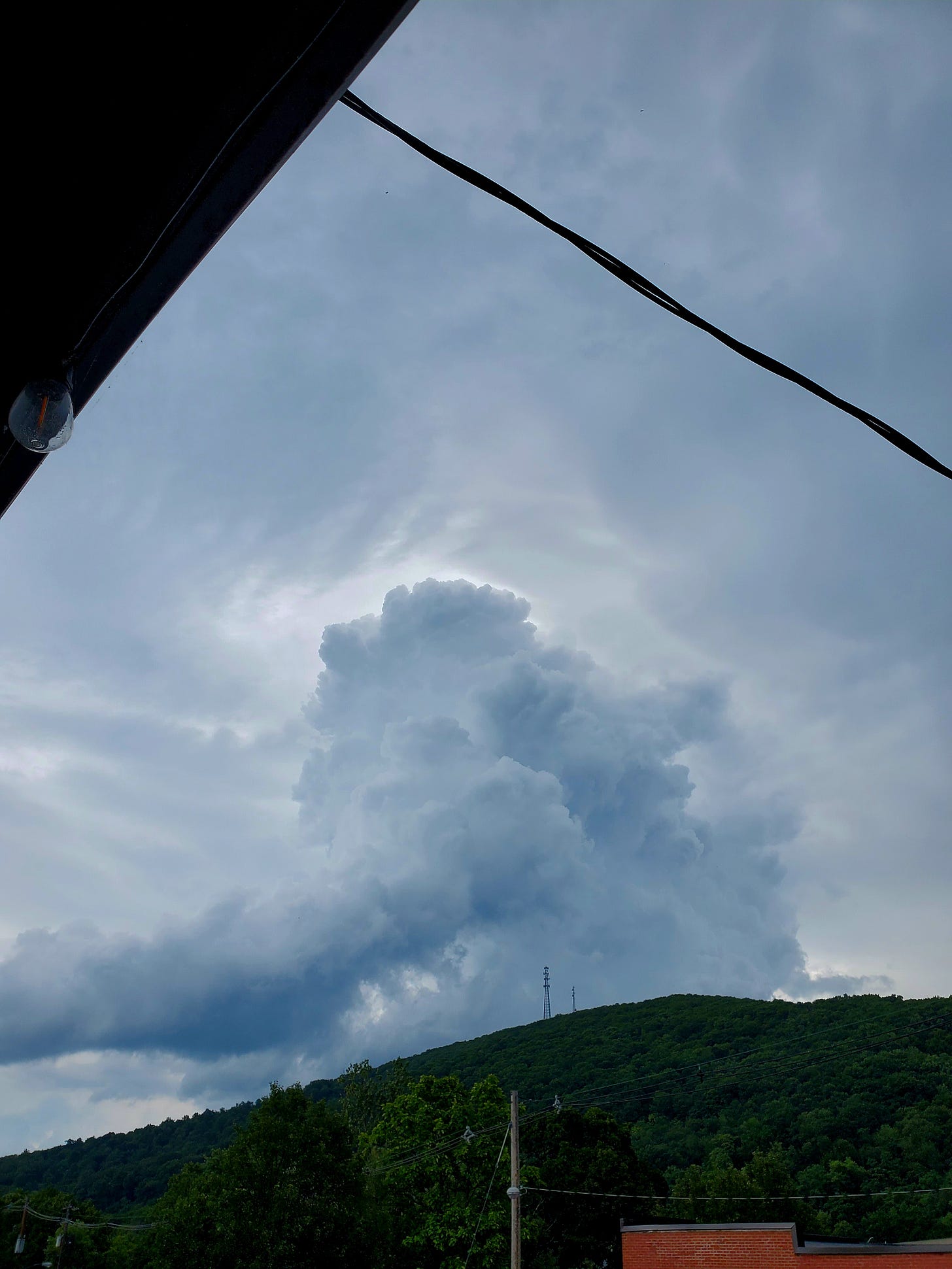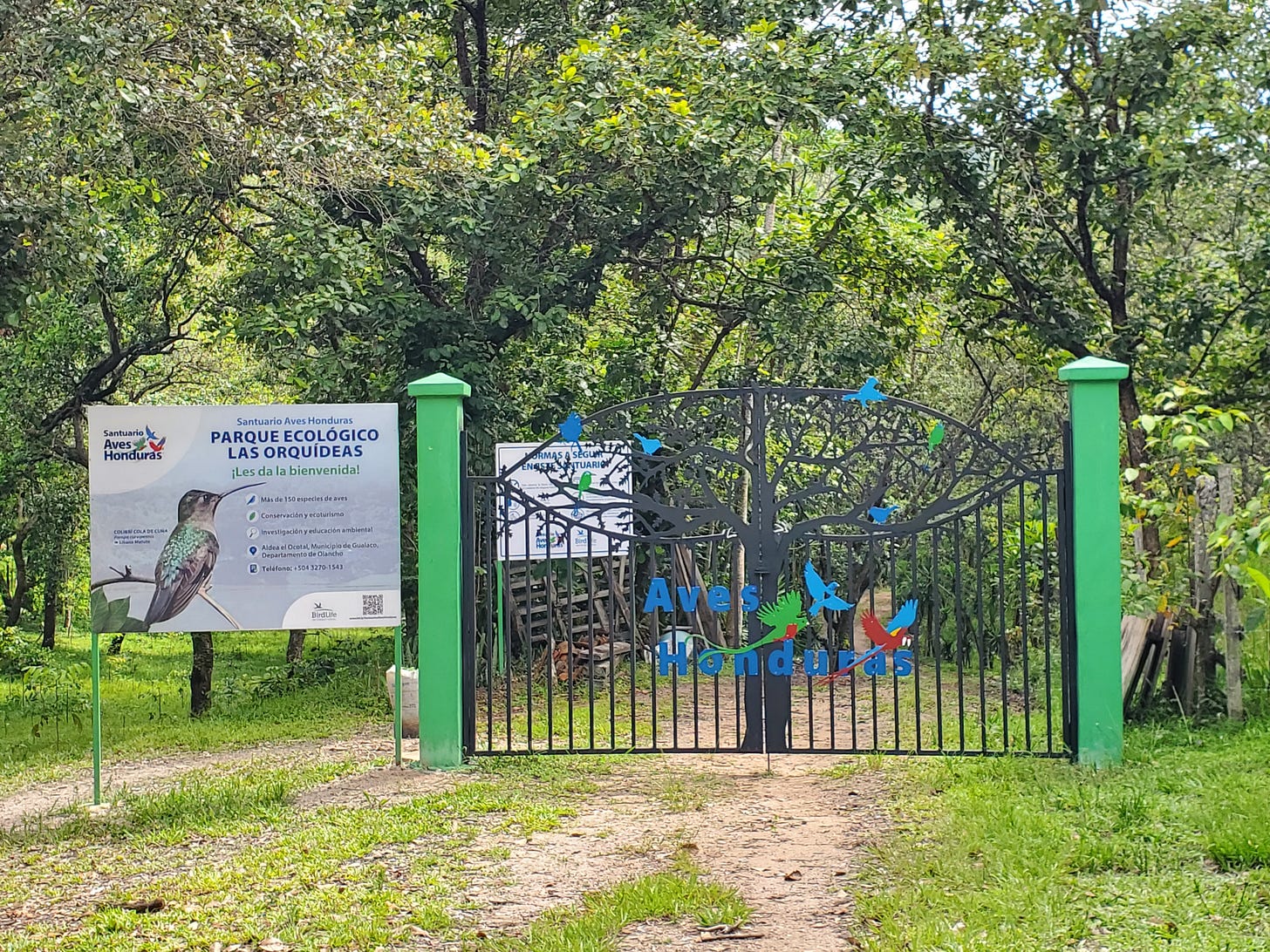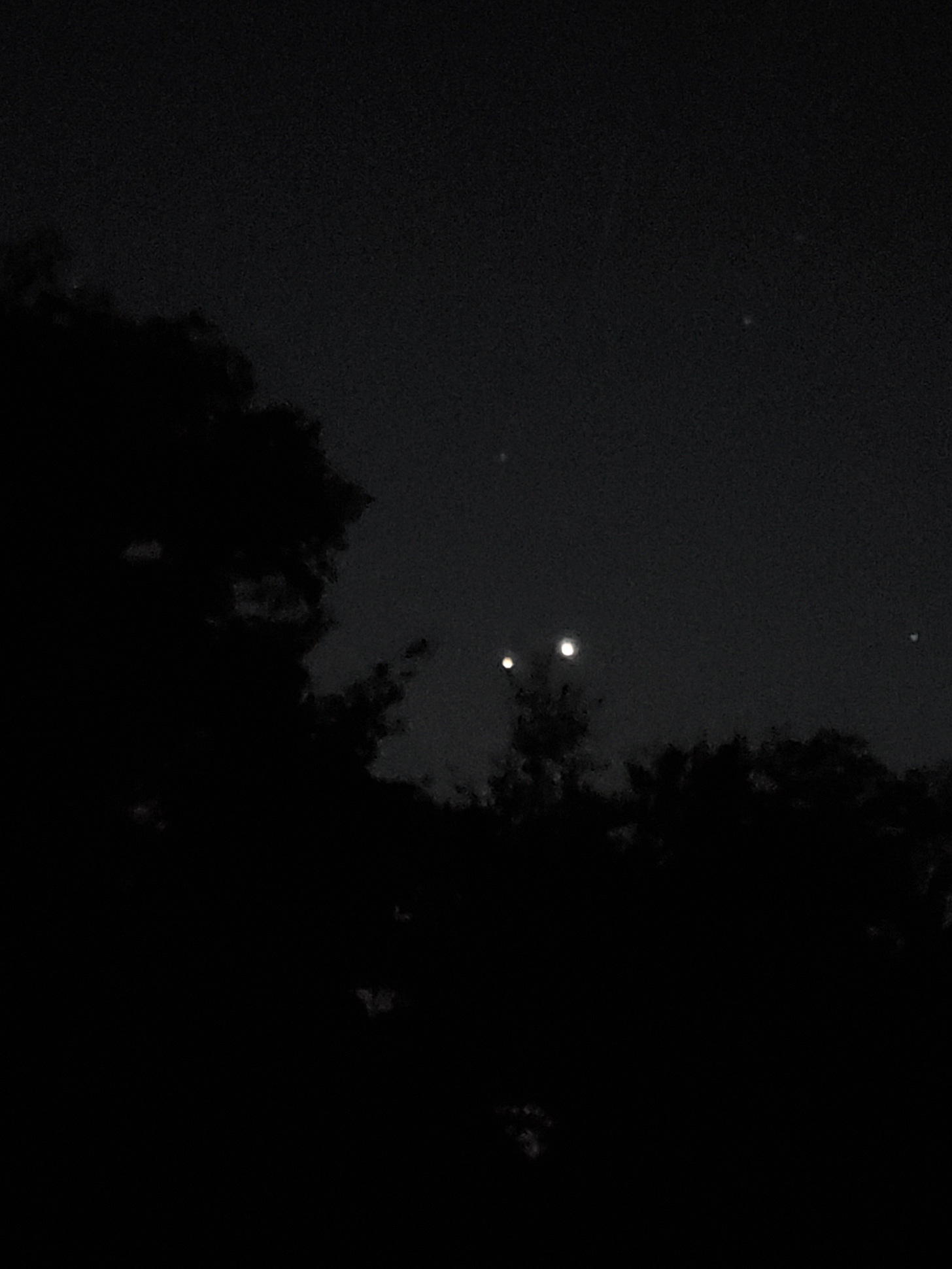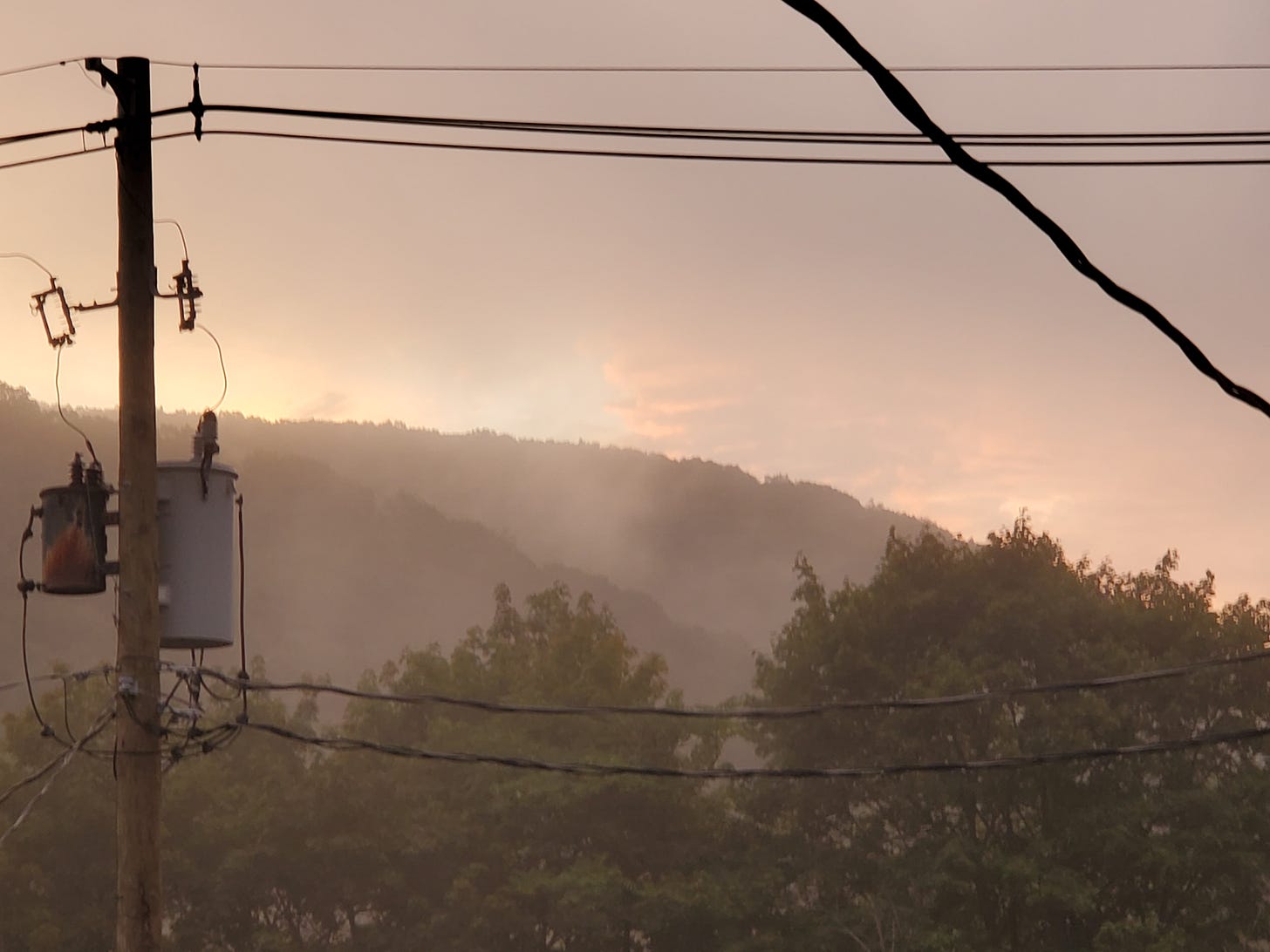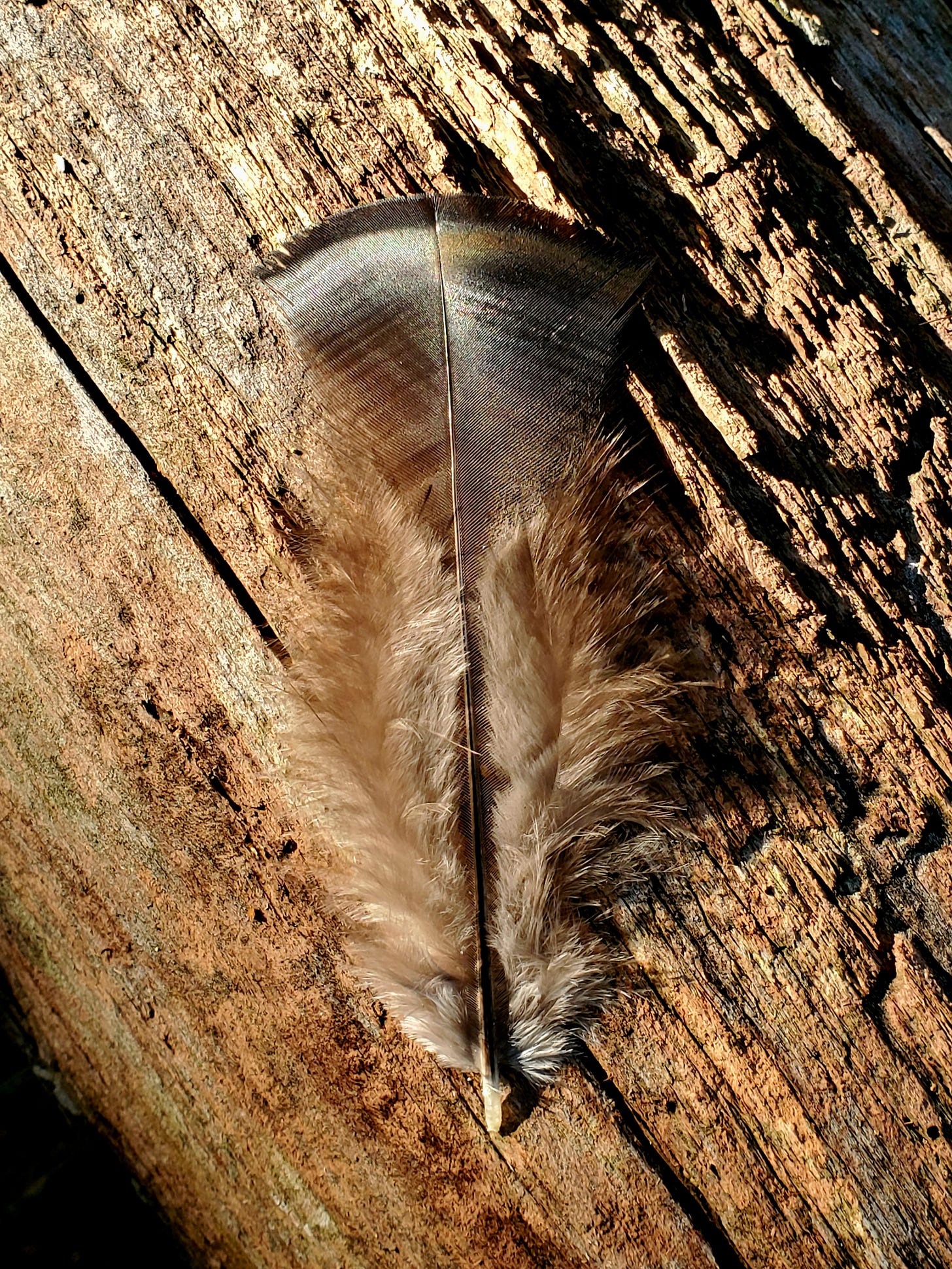The nocturnal flight call of a Swainson’s Thrush around 10:40 PM on June 12th marked the detectable end of the northward migration in my corner of the planet. Seventeen nights later, on light breezes, a Spotted Sandpiper cried at 2:40 AM, harbinger of the return.
Thrush movements began around the same time, and picked up speed in early July: first a Hermit Thrush at 12:39 AM on the 9th, a couple hours before the teetertail, and then a Veery and a Wood Thrush around 11 PM the next night, followed by another Wood Thrush not long before dawn on the 30th.
More Veeries and Wood Thrushes went over on the cool night of July 4th, and at 2:07 AM on the 6th, the antenna picked up the first peep from a presumably southbound Swainson’s Thrush.
As I’ve commented in past years, the shorebirds are likely to be long-distance migrants. July thrushes, however, seem to be molt-migrants, moving unknown distances to undocumented hide-outs for a month or two.
A steady trickled of shorebirds is one of the highlights of the July night—few and often faint, with always the possibility of something rare, and the looming curtain of katydids that obliterate stheir sounds, and just about everything else, by the first of August.
Coalescence
Throughout May and the first part of June, European Starling noise and numbers swelled in town as second and perhaps even third broods emerged as family units, with a continuous coming and going from nearby mountains and valleys. I noticed th predominance of one certain vocalization, a strange, raspy call emitted from perched birds when flocks in the dozens swirled about overhead. By June 20th, Sinking Valley was awhirl with starling flocks, and even into early July, over 100 starlings were about town in the course of dawn’s first hour. And then numbers plummeted—by the second half of July, only a tiny handful were left.
Perhaps I was witnessing the coalescence of nuclear families into multi-generational flocks, and these combining with other family flocks until they all left the area, or at least town. The raspy calls seem to be some sort of signal to join up, of recognition or identity. I got the distinct impression that I was watching the first steps of murmuration formation, or maybe re-formation, since I suppose the older birds had done this before. I can imagine these local flocks joining up with other local flocks, specific sets of lineages, the mass then moving somewhere else, an agricultural region with better food, then ever-larger flocks forming, and so on into the hundreds of thousands of individuals and more. It would make sense that the smallest units of vast Starling murmurations are groups of interconnected individuals, from related families and the same places, maybe even with some sort of common dialect.
In August, starlings—maybe the earlier summer ones, but possibly others entirely—began their characteristic dawn commute from Sinking Valley back into Bald Eagle Valley. From the perspective of First Field, one could count dozens or even hundreds streaming by in a short stretch before the sun rose, against the pink sky. From my balcony in Tyrone, all that were visible were small groups, already broken apart, plummeting down into trees and onto posts and poles. At no time did they gather in a single place, or whirl about in large numbers in the sky.
Common Grackles were also conspicuous in their near-absence throughout late July, before returning in modest numbers in August. Though not here over the winter like starlings, they had trickled back to our cold mountain valleys in February forming ever-larger flocks well into April, before pairing up and hatching their broods. The new families, with gangly, begging offspring, arrived every day around dawn to clamber about jungly locations I call Gracklevilles, as loud and dominant as during the displaying periods of males months prior. Then, in June, at the same time as the starlings, they flocked up again and left town, from groups of five or six to groups of dozens. I tallied 570 grackles sweeping through town on the early morning of July 2, all going over from southwest to northeast. After that, numbers dropped again for several weeks, to return by August into groups of 30 to 50 that began to enter town from the south every morning, after all the other birds had ceased their dawn activities.
Cacophony to Monastery: July
May days and nights are deafening, but as June progresses, the singing dies down steadily, and July is a steady slide into silence. August is as still as a tomb. At dawn, fewer and fewer robins start singing later and later, hushing up well before 6 AM, even as the light comes later. By August, robins rarely sing at all. Among the locals, Baltimore Orioles are the first to quiet entirely; they’ve not left, only moved a bit up or down the river or up into the mountain forests, foraging quietly and occasionally issuing some sound. Warbling Vireo numbers go up, but their songs are seldom heard.
Out in the woods, Eastern Screech-Owls reappear in July, with a diverse array of wails and screeches throughout the night and even into the morning, punctuated now and then by the equally haunting sounds of Barred Owl families. A few cuckoos cluck now and again, whip-poor-wills call at all hours, and Eastern Wood-Pewees and Eastern Towhees also go off now and again, pewees with song and towhees with the kinds of reeps one makes when awakened from a sound sleep. But other than that, between dusk and dawn, the only consistent nocturnal songster is the Field Sparrow, ever searching for another family.
Days grow quieter as well, though plenty of communication between family members takes place, begging, complaining, song learning, scolding. Just about anywhere with thick vegetation explodes with activity if one mimics a titmouse, vireo scold or screech-owl: there are more individual birds about in July than at any other time, I believe. Entire loquacious families of Carolina Wrens roam about the undergrowth, bands of Black-capped Chickadees, Downy Woodpecker clans. The subtropical heat, near-daily rain, and clouds of bugs worthy of the North Woods makes most birding a daunting proposal, except at the very earliest moments of dawn.
On July 16th, a Wednesday, I took advantage of a readjusted work schedule to do a quick hotspot circuit, drenched in bug spray and walking fast. The deepest Hollow was already alive with Acadian Flycatchers at every turn—21 heard in the semi-darkness—and the Wood Thrush chorus, reaching a county-record 56 separate singers, strongly suggesting, as I mentioned last year, that (as NFCs reflect) the hotspot is a molt-migration destination for out-of-towners. Mom thinks, and I agree, that the post-breeding chorus, far more grand than that during early breeding season, involves some sort of lesson from parents to offspring. The singing will soon die down again, even though Wood Thrushes won’t be leaving until September.
Shorebirds of July, and a new record reached
The shorebird migration was, as always, quite modest, but I suppose that’s because most of whatever goes over is far too high up to be captured. Not surprisingly, Spotted Sandpipers were the most frequently recorded, around a dozen times starting on the 8th and until the bug chorus drowned them out by the end of the month. They sometimes vocalized as early as late dusk, suggesting lift-off from nearby locations.
A Killdeer at 2:50 AM on the 9th could just have been a local, but it might have a migrant as well—their migratory period extends for most of the second half of the year. For the second year in a row, a Sora went over in July, this time not long before 3 AM on the 8th. A week later, a Lesser Yellowlegs, one of the July dependables, went over, and several more, some possibly in flocks, were picked up later in the month—the strongest showing of this species we’ve had here since the antenna went up. Greater Yellowlegs, a species we missed in the spring, showed up on the 19th and again on the 24th. A single Least Sandpiper vocalized overhead at 4:16 AM on the 22nd.
The quiddyquit also did not disappoint, for the third year in a row. After an earlier false alarm, a nice Upland Sandpiper called multiple times at 5 AM on July 22. With this addition, the year list stood at 206 (204 showing on eBird, plus hidden Barn Owl and American Goshawk), well above any previous total and with a small number of species nearly guaranteed or least highly possible.
The crypto-migrants
The marvelous pre-cricket, pre-katydid July NFC window, which shut decisively by July 25, also, as in past years, continued to provide insight into other nocturnal movements. Chipping Sparrows first, then Indigo Buntings, American Redstarts, a Grasshopper Sparrow here or there, Rose-breasted Grosbeaks by the dozens, unidentifiable “zeep” and “up” warblers, all on the move. As we’ve said before, some may be moving locally, forced out by field mowing, or on their way to molt-migration hide-outs. Others are likely adults that finished breeding or that failed to breed, already on a southward vector.
What is intriguing is the diurnal invisibility of this phenomenon. Except for the occasional Swainson’s Thrush, like one I found hiding out in a mixed flock at the edge of First Field on July 26, the daytime birds could all be locals. But to judge by the presence of the Swainson’s, the nighttime movers are also mixed in. Unlike in August, when the rest of the true Northerners begin to show up (like a Yellow-bellied Flycatcher on August 19, not to mention Cape May Warblers already in the spruce grove by the previous weekend!), it is impossible to know who is whom.
(Birdcast, the bird migration forecasting site, is also unhelpful, as it only resumes operations on August 1.)
August: The Return
As bad luck would have it, the computer crashed and the NFC microphone did not record in the first week of the month, during which time nights were crisp and cool. I was oblivious, at a different bird mountain - the Las Orquideas Bird Sanctuary in Honduras, where my long-time colleague Isidro Zuniga has been assiduously protecting his patch of tropical dry forest for the last 25 years.
Montaña de Aves
The private sanctuary’s eBird numbers are still pretty low due to spotty coverage, but the richness of the location even pre-migration was impressive: King Vultures soared over, while woodcreepers, motmots, bentbills, flatbills, and hummers of all descriptions reveled in the dense, protected undergrowth, canopy, and fruiting and flowering trees Isidro has fostered intentionally to increase biodiversity. At night, we were startled by a Black-and-white Owl calling from a few feet away, though the resident Northern Potoos were silent, perhaps cowed by dueling Evangelical loudspeakers blasting out joyous but highly annoying Christianish sounds from a village 2km away.

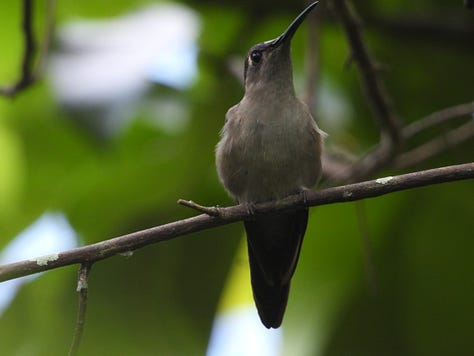
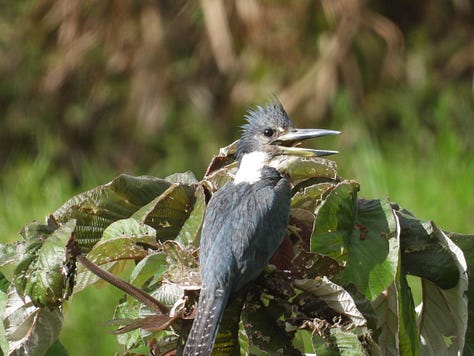

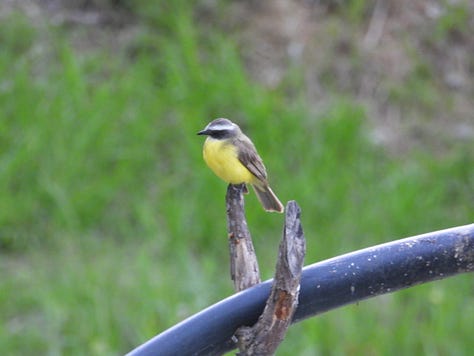
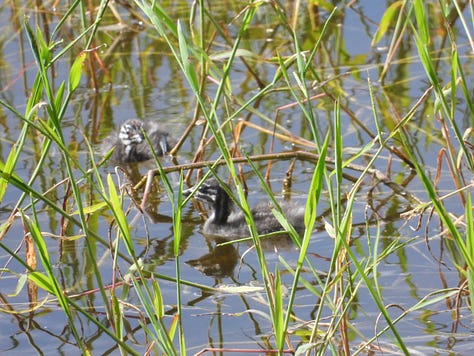
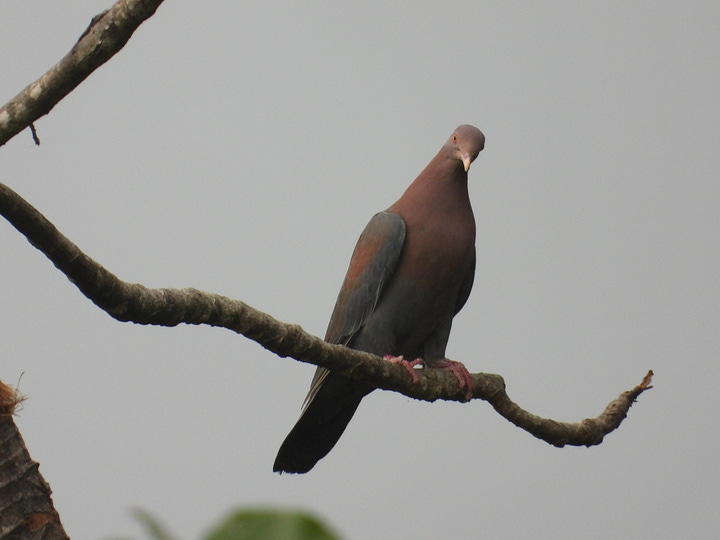
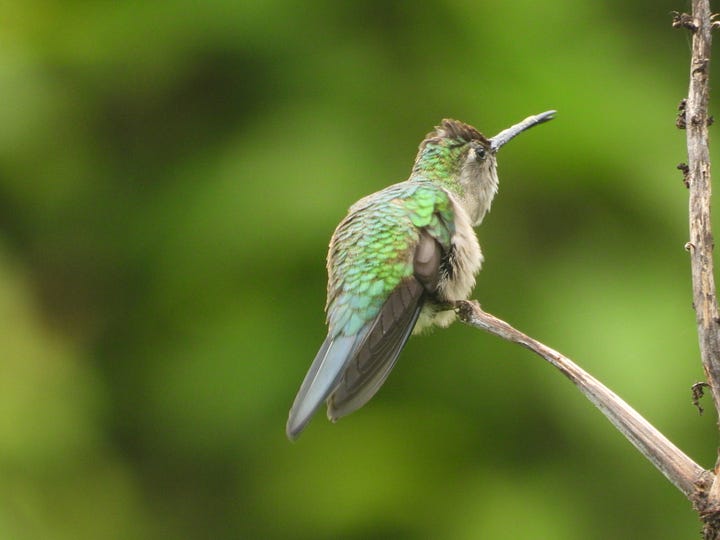
Even by early August, northern migrants had already begun to trickle in. The Louisiana Waterthrush bobbing about forest pools was expected, but more surprising were not one but two American Redstarts, a male and a female, on July 3. A couple days previous, Isidro had watched a Belted Kingfisher, a smaller version of the resident Ringed Kingfisher, feed in his tilapia ponds. A few days later, he sent me a recording of that familiar scold—the Red-eyed Vireo had also returned.
He even showed me the new MOTUS tower, erected last February to monitor Wood Thrushes a team banded on this property. You can track them and watch for their (hopefully) imminent return here.
Silent Multitudes
I came back to the no-longer-cryptic migration in full swing, but still in early days. Venus and Jupiter hung out close by in the morning sky, and by the 10th of the month, we were back in heat, humidity, and a woods more buggy than we could ever remember. The NFCs were all but useless, only an occasional thrush or warbler sonogram making it through the cricket and katydid curtains that obliterated the dusk chorus, blurred the dawn chorus, and wiped out everything in-between.
On the 9th, the balcony started out a bit cold, but unlike in earlier months, nothing stirred until a robin tutted at a quarter to six, after it was already mostly light. Faint American Goldfinch twitter, fainter Northern Cardinal, and then one of the last Louisiana Waterthrushes, calling and singing up and down Bald Eagle Creek.
The near-disappearance of swallows this summer is made up for, in terms of the bug harvest, by a healthy number of Chimney Swifts. On this morning, as throughout the month, many dozens hunt the skies above town, from 6 AM until after 8 at night. Meanwhile, House Finch numbers mount—peak flight occurs today at 6:17 AM as singles, pairs, and small groups all head out from downtown trees, going south somewhere to feed. And Canada Geese are also about—over 70 depart the reservoir (I assume) and disappear eastward to feeding spots in Sinking Valley.
By the 15th, House Finch numbers have swollen to over 100, heading south at dawn. Grackles arrive later, well after 7, and from the opposite direction, settling into creekside trees. The early pink sky hosts the typical first flock of 40+ Rock Pigeons—a new phenomenon this year, as previous years always started with less than a dozen together making the first commuting foray out over Bald Eagle Mountain. Today, the swarm is acting oddly, with a sentinel (or lure?) breaking off westward, and the eastward-moving mass pushed back by some invisible force. This quickly becomes something visible: a Merlin, of all things, diving straight into the middle of the flock, but seemingly not so successfully terrifying as a Peregrine. Its attempt is an utter failure, and as soon as it jets back toward the area of the mountain antennas, the pigeons resume their commute as if nothing were amiss.
Balcony mornings are amazingly quiet sound-wise, but this is more than compensated for by a sharp increase in the amount of aerial activity, even on stagnant days without uplift, which is mostly what we’re getting. This is easily explained: birds are in family groups, overall numbers are larger, and as breeding is over there’s no more need to stick close to home. Cedar Waxwings, American Crows, goldfinches, robins, a few Barn Swallows, and all the others that sleep in or close to town are all highly mobile during the day. Even the occasional Belted Kingfisher and Great Blue Heron are about, while Mallard families swim up and down, down and up the rapids of both streams.
Without many updrafts, local raptors are tougher to find. Even Turkey Vultures wait until later in the day to make an appearance. A rare buildup of cumulus in the east in mid-afternoon on the 16th allows me to spot the first Osprey of August flying over high, east to west ( a pair appears at dawn, flying east into the Gap from town a couple days later, maybe the same that first showed up in the area in late July). A Black Vulture also shows up, along with a circling pair of Broad-winged Hawks and the usual Red-tailed Hawk. As for Cooper’s Hawk, at least one is frenetically active in Tyrone. Paola and I practically got close enough to touch one perched on a mailbox on the south side of town; it was too intent on hunting House Sparrows to pay us any mind.
A long-lost friend
The real action, of course, is in the woods and field edges up above. By mid-month, the molt-migrants and true migrants are all beginning to mix together with the permanent residents, and mega-flocks of dozens of species and hundreds of individuals are grouping into the same locations as every year, separated by many of yards of silence and strung out along the axis of east-facing Sapsucker Ridge. One flock is at the Far Field, another at the top of First Field, another around the powerline cut, another off the northwest end of First Field, and so on, with the last one around the confluence of Greenbriar and Bird Count trails.
On the 16th, I am finally able to get to the neck of First Field by the powerline, my preferred Fall dawn spot, before the birds start up—except for a distant whip-poor-will. It’s in the low 60s and clear, with Jupiter and Venus within a hands’ breadth of each, and a moon half-full (or is it half-empty) floating above. The Gray Catbirds are thick in the tangles, crackling, meowing, and flying about in seeming anger at the fact that I’ve invaded their morning fly-across lane. The pre-6 crowd are Wood Thrushes, now only tutting, towhees, Field Sparrows (a few still insisting on singing all night as well), a Song Sparrow, and pewees. Finally, a true songster just at 6: Hooded Warbler, one of the only species other than Carolina Wren that sings regularly this time of year. Screech-owls are also nearby, duetting down by the buildings somewhere. They’re more active and vocal than I’ve heard in years.
Crows, Common Yellowthroats, Indigo Buntings—calls, not songs of these last two. Then chickadees, titmice, and the first swift overhead by 6:15, followed by waxwings. Pileated Woodpecker, then White-breasted Nuthatch, then Red-eyed Vireo. Singing, endlessly, all day long, never stopping, dozen upon dozen upon dozen.
At 6:27, the starling commute, distant, beyond Sapsucker Ridge, from valley to town. Red-bellied Woodpecker, and then Northern Flicker: the latter in high numbers this year, seemingly with a fair number of successful families. At 6:31, Blue-headed Vireo song and then a singing Chestnut-sided Warbler, possibly an out-of-towner, just as the sun strikes, a full hour earlier than it hits the balcony in town.
To start, there isn’t much warbler activity—not as much, at least, as there will be when the Tennessees, Nashvilles, and other northerners stop through in a couple weeks. The activity is concentrated in the spruce grove, where swarms of gnats attract Black-and-white, Black-throated Green, Blackburnian, and the first Cape May warblers. Young Ovenbirds strut up and down the spruce branches calling loudly, while Hooded Warblers practically fly into my face.
Ruby-throated Hummingbirds dance and fight everywhere, chasing each other and other species, sometimes seesawing back and forth in the air as if in courtship mode. The near side of the Far Field is also packed with birds, as more Chestnut-sided Warblers are joined by a flock of Black-throated Greens and Blue-gray Gnatcatchers. Scarlet Tanagers are molting, and mostly in pairs.
By 9 AM I’m back at the base of the powerline. The black cherries are a miserable failure this year, once again, and the catalpa trees have been stripped of all their leaves. The fallen catalpa that in the past has been a prime spot for warblers—Mourning, Connecticuts, Northern Parulas, Pines, and all the rest, at close range—doesn’t disappoint. Hoodeds, Ovenbirds, and the other common species emerge from the deep tangle out into the outermost branches to check me out. And then, the star of the show, a bold, male Golden-winged Warbler flits about in plain view, the best look I’ve gotten here in a quarter century, when last they bred. I missed the species altogether last year, and caught only a brief glimpse the year before. I had already given up hope this year, but #207 is there, in all his glory, and not a visible hint of interbreeding with Blue-winged Warbler.
This leaves only the Prairie and Orange-crowned warblers as challenges for the year (the Connecticut will also be new, but it’s a given in September). My superstition kicks in: I had to give up on Yellow-breasted Chat, Olive-sided Flycatcher, and Golden-winged Warbler before I saw them; I had resigned myself to the fact that I couldn’t and wouldn’t find them. This year, all three have stopped by—score one for serendipity!


